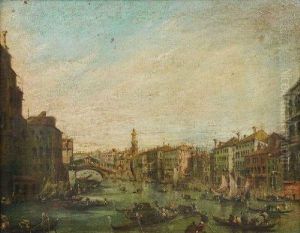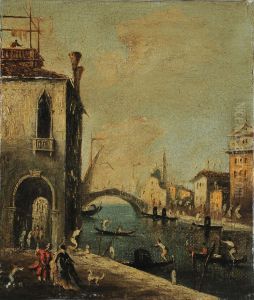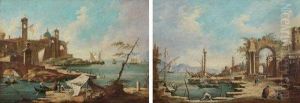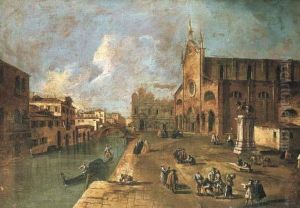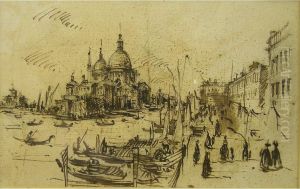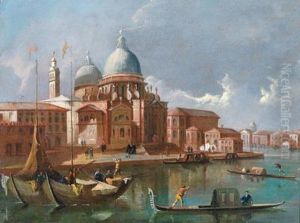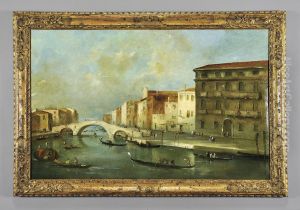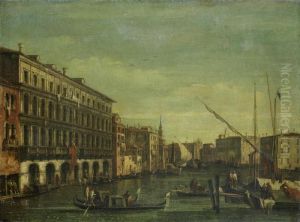Nicolo Guardi Paintings
Nicolo Guardi, often less prominently known compared to the illustrious members of the Guardi family, was born in 1715 in Venice, Italy. The Guardi family is most renowned for Francesco Guardi, Nicolo's younger brother, who was one of the last great painters of the Venetian school, celebrated for his veduta paintings that captured the essence of Venice with a poetic and evocative touch. The family's artistic legacy also includes Gianantonio Guardi, the patriarch, and another brother, Gian Domenico Guardi. Despite being part of this artistic dynasty, Nicolo's contributions to art are not as well-documented or celebrated as those of his brother Francesco, leading to a certain level of obscurity about his life and works.
Nicolo Guardi's artistic endeavors, much like those of many artists of his time, were deeply influenced by the vibrant cultural and artistic atmosphere of 18th-century Venice. This period was marked by a transition from the grandiose styles of the Baroque and Rococo towards more intimate and detailed portrayals of urban life and landscapes, a genre in which his family notably excelled. Although specific details about Nicolo's oeuvre are scarce, it is known that he worked within the family tradition, contributing to the Guardi legacy of capturing the ephemeral beauty of Venetian life and scenery.
Despite the overshadowing fame of his brother Francesco, Nicolo Guardi's role in the Venetian art scene of the 18th century should not be underestimated. His works, although less recognized, contributed to the rich tapestry of Venetian art and the transition it underwent during this period. The lack of extensive records on Nicolo's life and art makes it challenging to fully appreciate his impact and the extent of his talent. Nevertheless, as a member of the Guardi family, his contribution to the arts is part of a collective legacy that has left an indelible mark on the history of art, particularly in the depiction of Venice's unique landscape and atmosphere.
Nicolo Guardi died in 1785, leaving behind a legacy intertwined with that of his more famous brother and the artistic heritage of the Guardi family. While his individual contributions may not have garnered the same level of recognition, his role within this family of artists remains an integral part of the broader narrative of Venetian art history. The Guardi brothers collectively captured the spirit of their time, and through their works, they continue to provide insight into the cultural and aesthetic values of 18th-century Venice.
